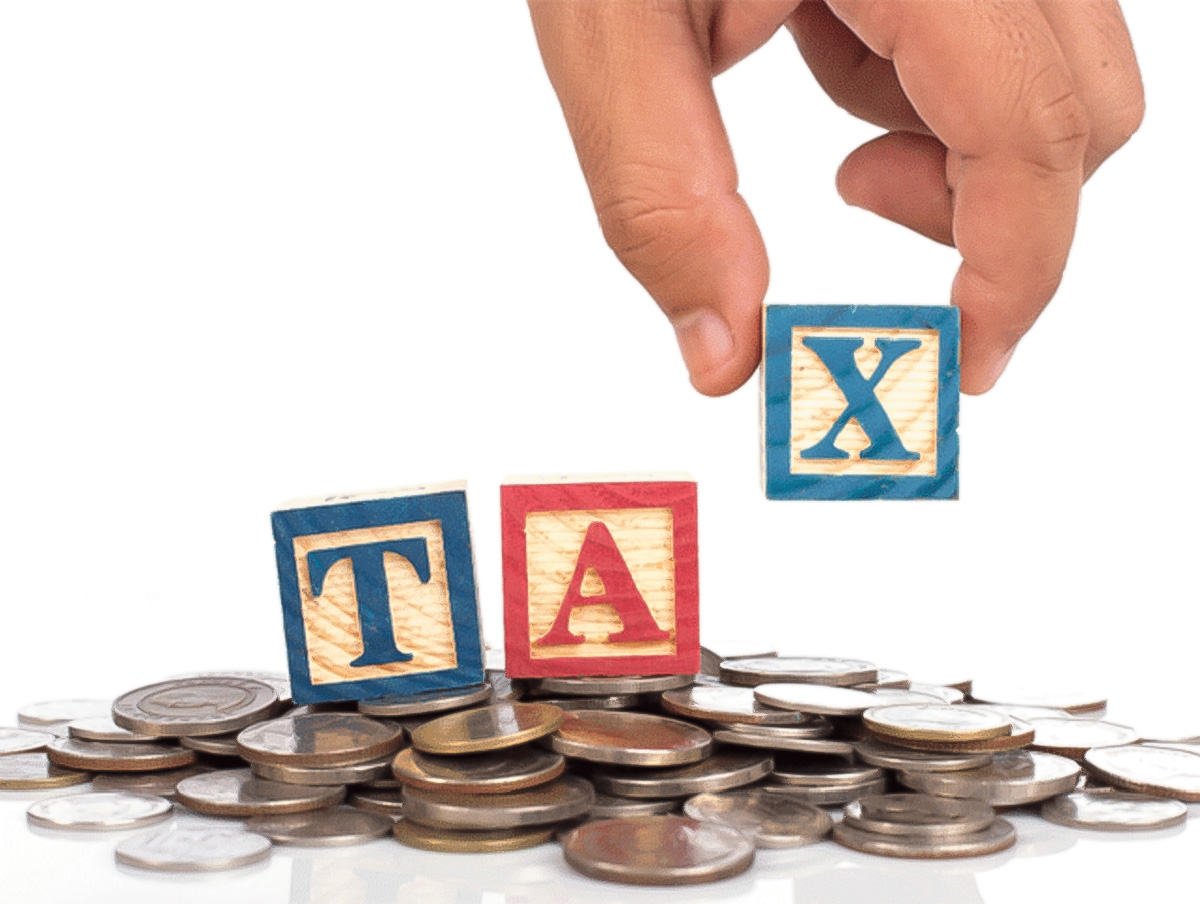

Finance
How Is Tax Calculated On Fixed Deposits
Published: December 22, 2023
Looking to understand how tax is calculated on fixed deposits? Explore our comprehensive guide on finance to learn more about this topic and make informed decisions.
(Many of the links in this article redirect to a specific reviewed product. Your purchase of these products through affiliate links helps to generate commission for LiveWell, at no extra cost. Learn more)
Table of Contents
Introduction
Fixed deposits are a popular investment option for individuals looking to earn a stable return on their savings. They offer a fixed interest rate and a predetermined maturity period, making them a reliable choice for risk-averse investors. However, it is essential to understand the taxation implications of investing in fixed deposits to ensure that you maximize your returns while complying with tax regulations.
In this article, we will delve into the taxation aspect of fixed deposits and explore how taxes are calculated on these investments. We will also discuss the factors that affect the taxation on fixed deposits and explore the impact of taxes on the overall returns. Additionally, we will highlight some tax-saving options available to investors in fixed deposits.
Understanding the tax implications of fixed deposits is crucial for both novice and seasoned investors. By gaining insights into how taxes are calculated and the potential tax-saving strategies, investors can optimize their wealth creation and make informed financial decisions.
Before we dive into the details, let’s first understand what fixed deposits are and why they are a preferred investment choice.
Understanding Fixed Deposits
Fixed deposits, also known as term deposits or time deposits, are a type of investment offered by banks and financial institutions. They provide individuals with a secure way to grow their savings by offering a fixed interest rate over a predetermined period.
When you invest in a fixed deposit, you deposit a certain amount of money with the bank for a specified term, typically ranging from a few months to several years. The bank then pays you interest on your investment at regular intervals, such as monthly, quarterly, or annually, depending on the terms of the deposit.
One of the key advantages of fixed deposits is their low-risk nature. Since they are issued by banks, they are considered safer than other investment options like stocks or mutual funds. The principal amount you invest in a fixed deposit is guaranteed, and as long as you hold the investment until maturity, you are assured of receiving the promised returns.
Fixed deposits also offer investors the flexibility to choose the investment term based on their financial goals and liquidity needs. Short-term fixed deposits typically have lower interest rates but provide quicker access to the invested funds. On the other hand, long-term fixed deposits often offer higher interest rates and are suitable for individuals looking for stable returns over an extended period.
It is important to note that fixed deposits have a lock-in period, during which you cannot withdraw the funds without incurring penalties. This helps promote a disciplined approach to saving and discourages premature withdrawals.
Now that we have a basic understanding of fixed deposits, let’s move on to exploring how taxes come into play when investing in these financial instruments.
Taxation on Fixed Deposits
When it comes to fixed deposits, taxes play a significant role in determining the overall returns. The interest earned from fixed deposits is considered as income and is subject to taxation under the Income Tax Act of the respective country.
In most countries, the interest earned on fixed deposits is treated as taxable income and is added to the investor’s total income for the financial year. The applicable tax rates for this income will depend on the individual’s income tax slab or bracket.
The taxation on fixed deposits varies from country to country, so it is essential to familiarize yourself with the tax laws and regulations of your specific jurisdiction. In some countries, tax is deducted at source (TDS) by the bank or financial institution when the interest exceeds a certain threshold. In other countries, the investor is responsible for paying the tax on the interest earned from fixed deposits when filing their annual income tax return.
Additionally, certain countries may offer specific tax exemptions or deductions on the interest earned from fixed deposits under specific circumstances. For example, some nations offer senior citizens or low-income individuals a higher threshold before tax is applicable on their fixed deposit interest.
The tax rate applied to fixed deposit interest may also vary depending on the duration of the fixed deposit. In some cases, long-term fixed deposits may have a different tax treatment compared to short-term deposits. It is crucial to check the applicable tax rates and rules to determine the most tax-efficient strategy for your fixed deposit investments.
Understanding the taxation on fixed deposits is essential as it helps investors plan their finances effectively and ensures compliance with the tax regulations in their respective jurisdictions. By being aware of the tax implications, investors can accurately calculate their post-tax returns and make informed decisions regarding their fixed deposit investments.
Now let’s move on to discussing the calculation of tax on fixed deposits.
Calculation of Tax on Fixed Deposits
The calculation of tax on fixed deposits depends on various factors such as the tax laws of the country, the individual’s income tax slab, and the duration of the fixed deposit. Let’s understand how the tax on fixed deposits is calculated in general terms.
First, it is important to determine the interest earned on the fixed deposit. This can be calculated using the formula:
Interest earned = Principal amount x Interest rate x Time period
Once the interest earned is determined, it is added to the individual’s total income for the financial year. The total income then determines the tax slab or bracket that applies to the individual. The tax rates can range from low to high, depending on the individual’s income level.
The tax is calculated on the interest earned at the applicable income tax rate. However, it is important to note that some countries have a different tax rate for interest income than the regular income tax rates, especially for financial investments like fixed deposits. Therefore, it is essential to consult the tax laws and regulations of your specific jurisdiction to ensure accurate calculations.
In some cases, the bank or financial institution deducts tax at source (TDS) when the interest earned on the fixed deposit exceeds a certain threshold. The TDS rate is predetermined by the tax authorities and deducted before the investor receives the interest payment.
If tax has not been deducted at source, the investor must include the interest earned from fixed deposits in their annual income tax return and pay the tax on the interest income as per the applicable tax rate.
It is important to keep track of the interest income from fixed deposits and maintain accurate records of the taxes paid. This will help ensure compliance with the tax regulations and avoid any penalties or legal issues. Consulting a tax professional or financial advisor can also provide valuable guidance on the tax calculations and strategies to optimize tax efficiency.
Now that we understand the calculation of tax on fixed deposits, let’s explore the factors that can affect the taxation on these investments.
Factors Affecting Taxation on Fixed Deposits
Several factors can influence the taxation on fixed deposits. Understanding these factors is crucial as it can help investors optimize their tax liability and maximize their returns. Let’s explore the key factors that affect the taxation on fixed deposits:
- Investor’s Income Tax Slab: The tax rate applied to the interest earned on fixed deposits depends on the individual’s income tax slab or bracket. Different income levels have different tax rates, and this can impact the tax liability on the fixed deposit interest. Higher-income individuals typically fall in higher tax brackets and may have a higher tax rate applied to their fixed deposit interest.
- Duration of the Fixed Deposit: The duration of the fixed deposit can also influence the taxation. Some countries may have different tax treatment for short-term and long-term fixed deposits. For example, long-term fixed deposits may qualify for lower tax rates or exemptions compared to short-term deposits. It is essential to check the tax laws and regulations specific to your jurisdiction to understand the tax implications based on the duration of the fixed deposit.
- Tax Deducted at Source (TDS): In many countries, banks and financial institutions deduct tax at source (TDS) when the interest earned on the fixed deposit exceeds a specific threshold. The TDS rate is determined by the tax authorities and is deducted before the interest is paid to the investor. The TDS amount is adjusted against the individual’s overall tax liability when filing their income tax return. It is important to track the TDS deductions and consider them while calculating the final tax liability.
- Senior Citizen or Special Category Benefits: Some countries provide specific benefits or exemptions to senior citizens or individuals belonging to certain special categories. For instance, senior citizens may have higher thresholds before the tax is applicable on their fixed deposit interest. It is crucial to understand if you qualify for any such benefits or exemptions and take advantage of them to optimize your tax liability.
- Other Sources of Income: The tax liability on fixed deposits is calculated based on the individual’s total income for the financial year. If an individual has other sources of income, such as salary, business income, or rental income, it can impact the tax slab and ultimately affect the taxation on fixed deposit interest. It is important to consider all sources of income and calculate the overall tax liability accurately.
By considering these factors and understanding the taxation rules and regulations of your jurisdiction, you can make informed decisions about your fixed deposit investments and effectively manage your tax liability.
Now, let’s explore the impact of taxes on the overall returns from fixed deposits.
Impact of Tax on Fixed Deposit Returns
Taxes have a significant impact on the overall returns generated from fixed deposits. The taxation on fixed deposit interest can reduce the net returns earned by investors. Let’s explore the impact of taxes on fixed deposit returns:
1. Reduced Post-Tax Returns: The interest earned on fixed deposits is considered as taxable income. This means that a portion of the interest earned will be paid as tax, reducing the net returns. The higher the tax rate, the greater the impact on the overall returns. It is essential to factor in the tax liability while calculating the post-tax returns to have a realistic understanding of the actual earnings from the fixed deposit.
2. Lower Effective Interest Rate: Taxes can effectively decrease the interest rate earned on the fixed deposit. For example, if the fixed deposit offers an annual interest rate of 5% and the applicable tax rate is 20%, the effective interest rate after tax would be 4%. This means that the actual returns earned from the fixed deposit would be lower than the advertised interest rate.
3. Compounding Effect: Taxes can also impact the compounding effect of fixed deposit returns. In a compounding scenario, the interest earned is reinvested, leading to higher returns over time. However, with the tax deducted from the interest, there is less money available for reinvestment, reducing the compounding effect and the overall growth of the fixed deposit returns.
4. Net Worth Erosion: Over time, the impact of taxes on fixed deposit returns can erode the purchasing power of the invested amount. If the tax liability is high and the returns are consistently lower due to taxes, the net worth of the investment may not keep up with inflation. It is important to consider the post-tax returns in relation to inflation to ensure that the fixed deposit investment is truly growing in value.
5. Tax Planning: Despite the impact of taxes, fixed deposits can still be an attractive investment option, especially for individuals in lower tax brackets or those seeking stability and liquidity. Understanding the tax implications and carefully planning the timing and duration of fixed deposits can help optimize the tax liability and maximize the after-tax returns.
It is crucial to consider the impact of taxes on fixed deposit returns when evaluating the suitability of this investment option. By factoring in the tax liability and understanding the overall returns net of taxes, investors can make informed decisions and adjust their investment strategy accordingly.
Now, let’s move on to explore some tax-saving options available for fixed deposits.
Tax-saving Options for Fixed Deposits
While fixed deposits may attract taxes on the interest earned, there are certain tax-saving options available for investors. These options allow individuals to optimize their tax liability and potentially increase their post-tax returns. Let’s explore some of the common tax-saving options for fixed deposits:
- Fixed Deposit With Tax Benefits: Some countries offer specific fixed deposit schemes that provide tax benefits to investors. These schemes may have a longer lock-in period or certain conditions, but they allow individuals to avail tax deductions on the invested amount or the interest earned. It is important to check with the banks or financial institutions for such tax-saving fixed deposit options.
- Investing in Tax-saving Fixed Deposit Schemes: In certain countries, there are dedicated tax-saving fixed deposit schemes that provide tax deductions to individuals under specific sections of the tax laws. These schemes have a lock-in period of a few years and offer tax benefits that can lower the overall tax liability. It is crucial to understand the eligibility criteria and the maximum investment limit under these schemes.
- Splitting Investments: Instead of investing a lump sum amount in a fixed deposit, individuals can consider splitting their investments across multiple banks or financial institutions. By spreading the investments, they can take advantage of the threshold for tax deduction at source (TDS). This can help reduce the TDS deduction and potentially increase the net returns.
- Tax Exemption for Senior Citizens: In many countries, senior citizens enjoy certain tax benefits and exemptions. Individuals above a certain age threshold may be eligible for a higher threshold before the tax is applicable on their fixed deposit interest. It is crucial for senior citizens to explore the specific tax regulations applicable to them and take advantage of the exemptions provided.
- Investing in Tax-efficient Instruments: Individuals can also consider diversifying their investments by allocating funds to tax-efficient instruments like tax-saving bonds, mutual funds, or government-sponsored savings schemes. These instruments provide tax benefits and can complement fixed deposits to create a more tax-efficient portfolio.
It is important to note that the tax-saving options for fixed deposits may vary depending on the country’s tax laws and regulations. It is advisable to consult with a tax advisor or financial expert to understand the specific tax-saving options available in your jurisdiction and how they can be integrated into your investment strategy.
By leveraging these tax-saving options, investors can effectively reduce their tax liability on fixed deposit investments and potentially enhance their overall returns.
Now, let’s conclude the article.
Conclusion
Fixed deposits are an attractive investment option for individuals seeking stable and secure returns. However, it is crucial to understand the taxation on fixed deposits to ensure that investors can optimize their returns and comply with the tax regulations in their jurisdiction.
In this article, we explored the taxation aspect of fixed deposits, including how taxes are calculated and the factors that can affect the tax liability. We discussed the impact of taxes on the overall returns from fixed deposits and highlighted the importance of considering post-tax returns to make informed investment decisions.
We also discussed various tax-saving options available for fixed deposits, such as investing in tax-saving fixed deposit schemes, splitting investments to minimize TDS deductions, leveraging tax exemptions for senior citizens, and considering tax-efficient investment instruments.
It is essential for investors to familiarize themselves with the tax laws and regulations of their respective countries or jurisdictions. Consulting a tax professional or financial advisor can provide valuable insights and help individuals make informed decisions to optimize their tax liability and maximize returns from fixed deposit investments.
While taxes may reduce the overall returns from fixed deposits, individuals can employ effective tax planning strategies and explore tax-saving options to mitigate the impact. By understanding the factors that influence taxation and leveraging available tax benefits, investors can make the most of their fixed deposit investments and establish a well-rounded financial portfolio.
In conclusion, with careful consideration of tax implications, investors can navigate the taxation aspect of fixed deposits and enhance their financial well-being through this reliable investment instrument.














